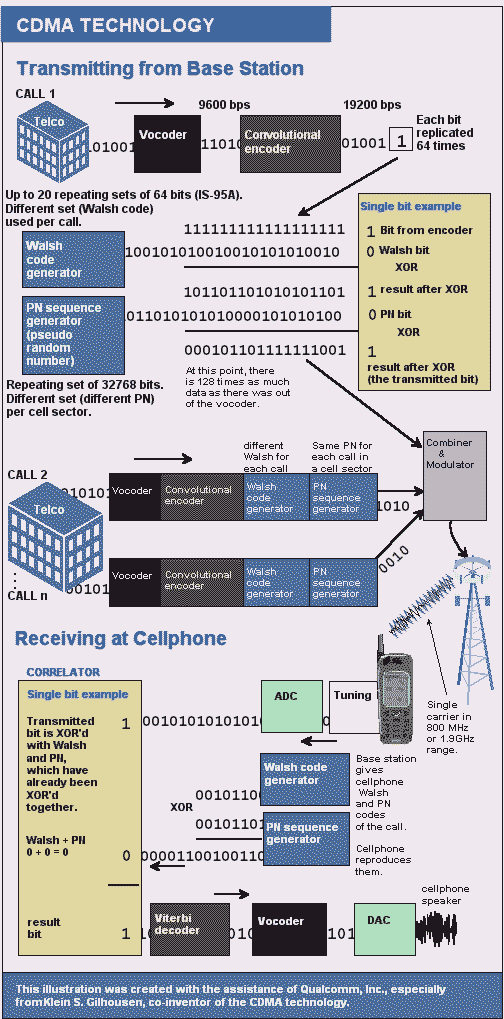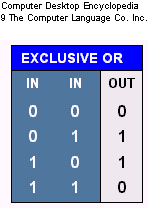![]()
CDMA
![]()
|
(Code Division Multiple Access)
A method for transmitting simultaneous signals over a shared portion of the spCDMA is the digital cellular phone technology from QUALCOMM that operates in the 800MHz band and 1.9GHz PCS band. CDMA phones are noted for their excellent call quality and long battery life.How the Technology Works
CDMA is a fascinating technology, and
the illustration below shows you how calls from a base station are encoded and transmitted
to a cellphone.
At the base station, each voice conversation is converted into digital code and compressed
with a vocoder. The vocoder output is doubled by a convolutional encoder that adds
redundancy for error checking. Each bit from the encoder is replicated 64 times and
exclusive OR'd with a Walsh code that is used to identify that call from the rest.
The output of the Walsh code is exclusive OR'd with the next string of bits (PN sequence)
from a pseudo-random number generator, which is used to identify all the calls in a
particular cell's sector. At this point, there is 128 times as many bits as there were
from the vocoder's output. All the calls are combined and modulated onto a carrier
frequency in the 800 MHz range.
At the receiving side, the received signals are quantized (turned into bits) and run
through the Walsh code and PN sequence correlation receiver to recover the transmitted
bits of the original signal. When 20ms of voice data is received, a Viterbi decoder
corrects the errors using the convolutional code, and that all goes to the vocoder which
turns the bits back into waveforms (sound).
The following illustration shows how bits move from base station to cellphone and a single
bit example takes you through the Boolean math. The example bit is a 1, and the Walsh and
PN codes are 0.

Follow the Single Bit Example This exclusive OR truth table shows you the Boolean
algebraic rules if you would like to prove the single bit example in the CDMA illustration
above. The example bit is a 1, and the Walsh and PN codes are 0.
